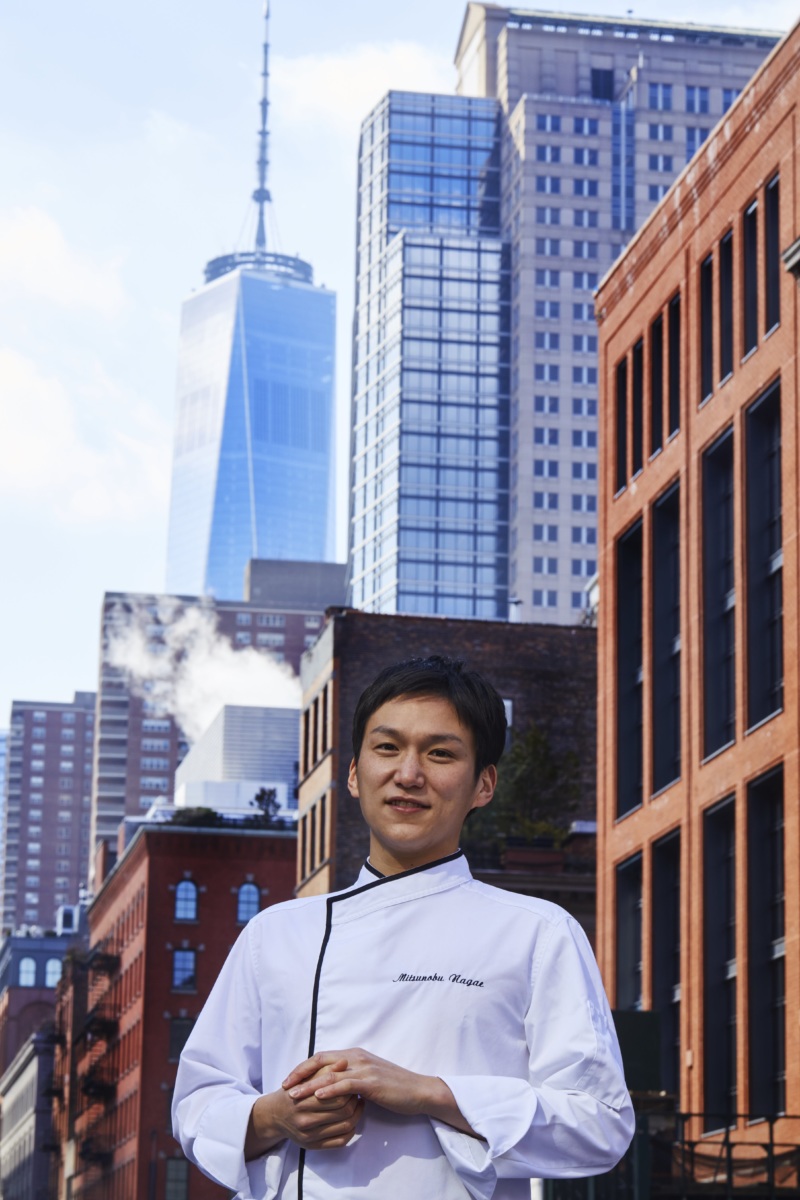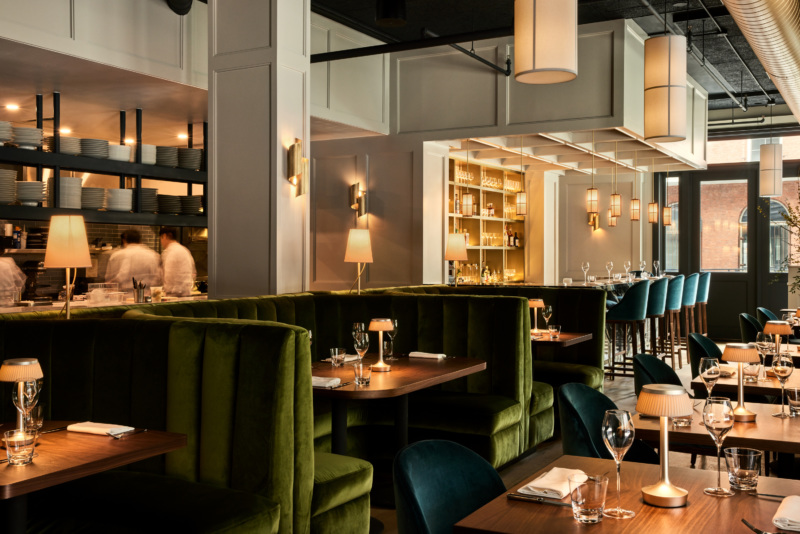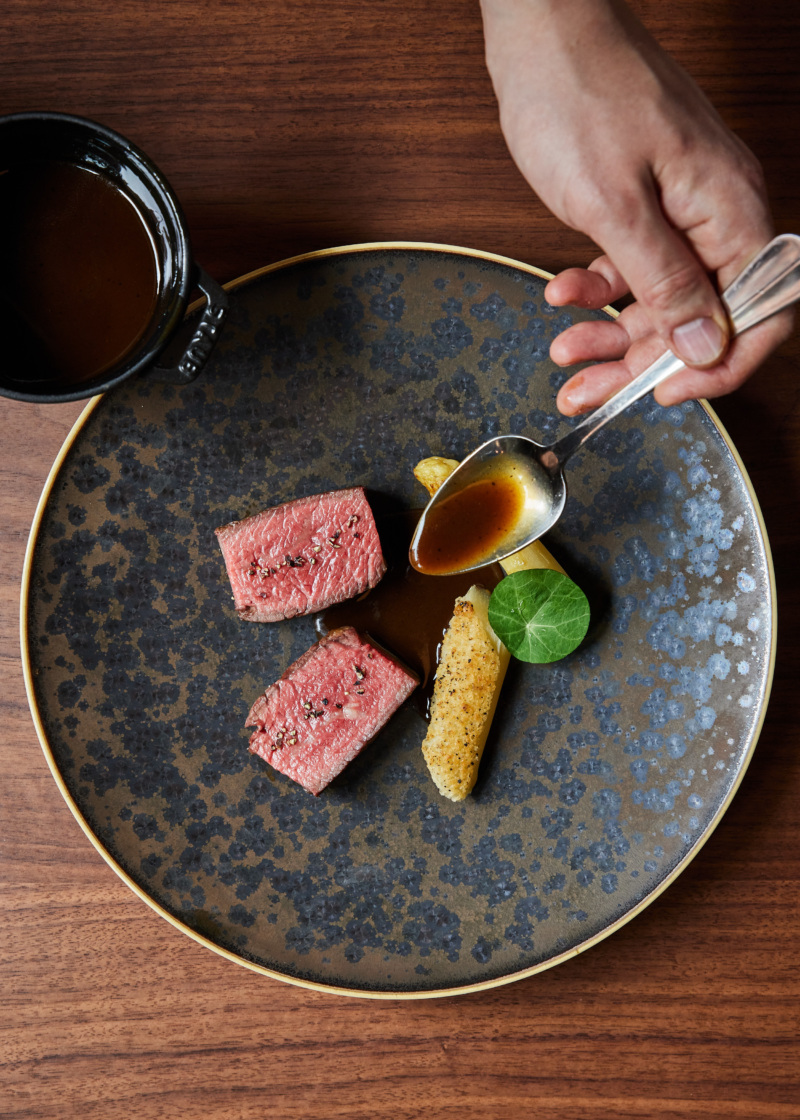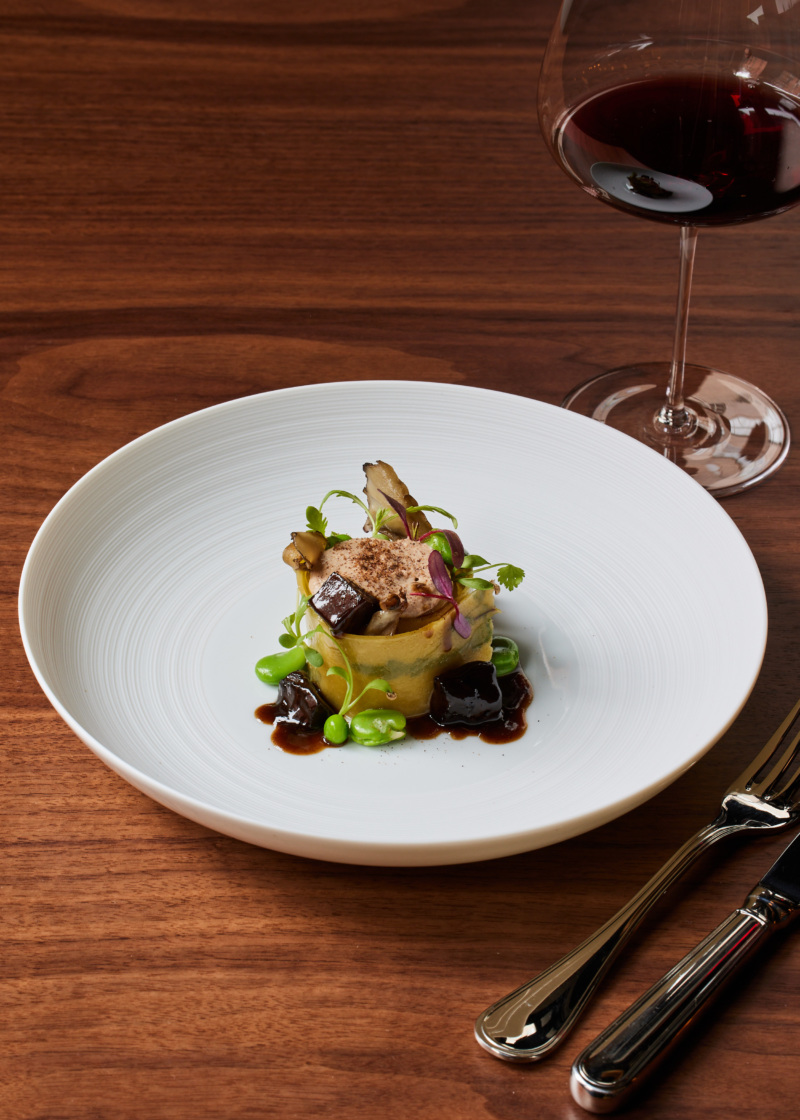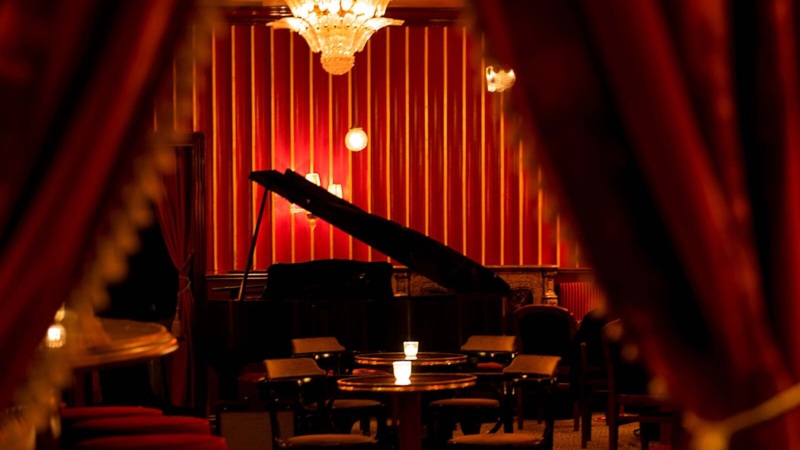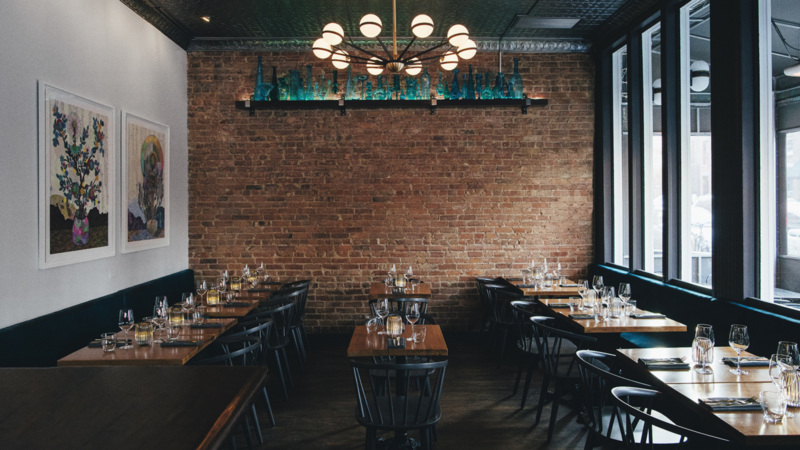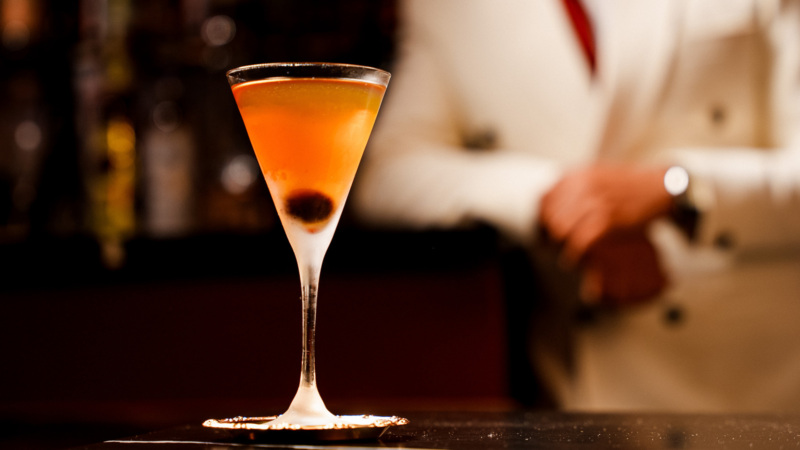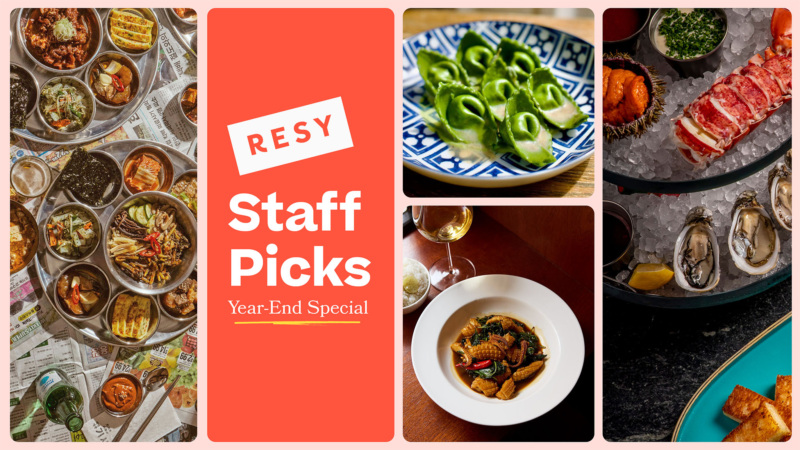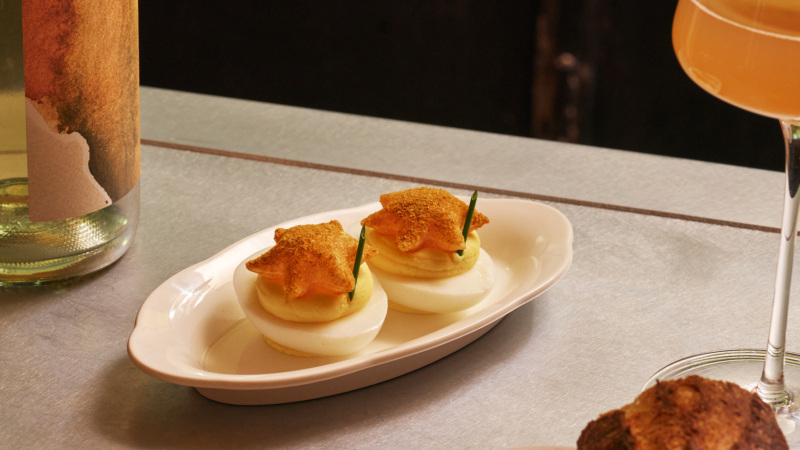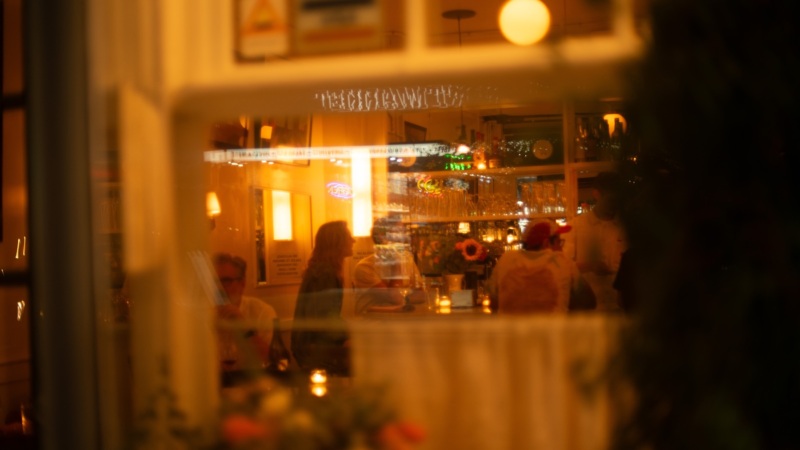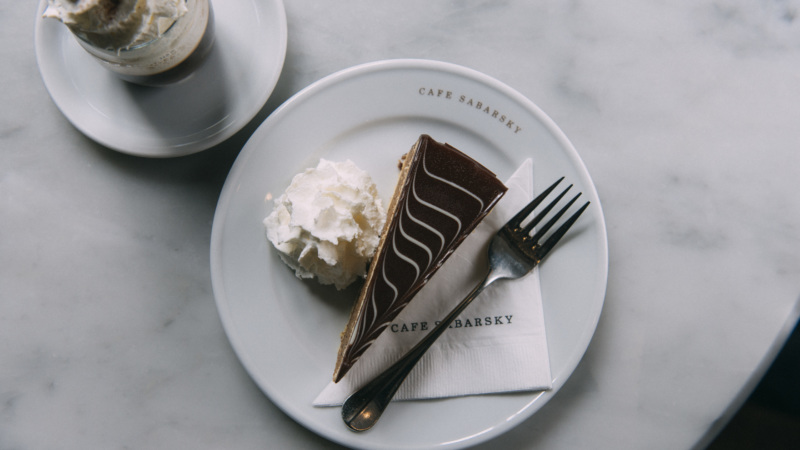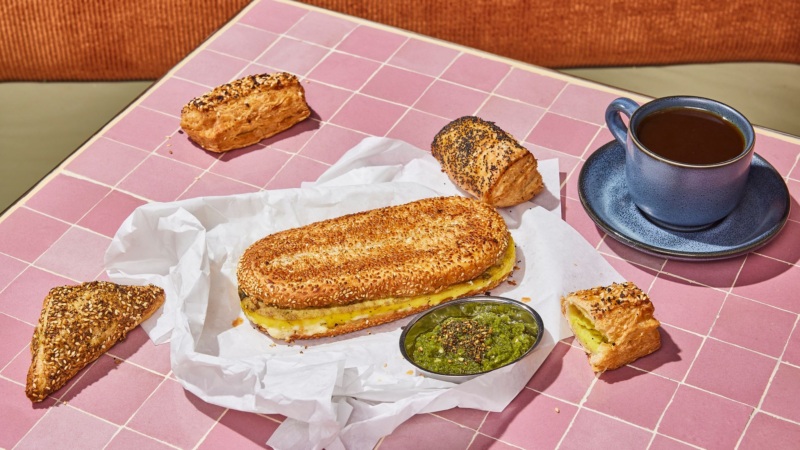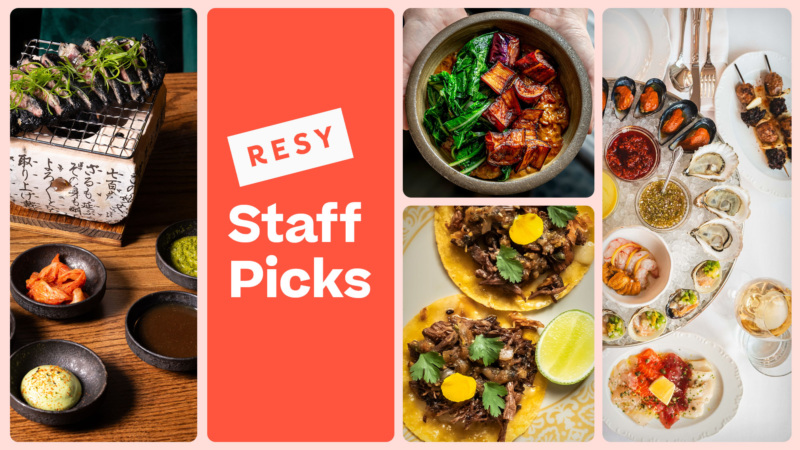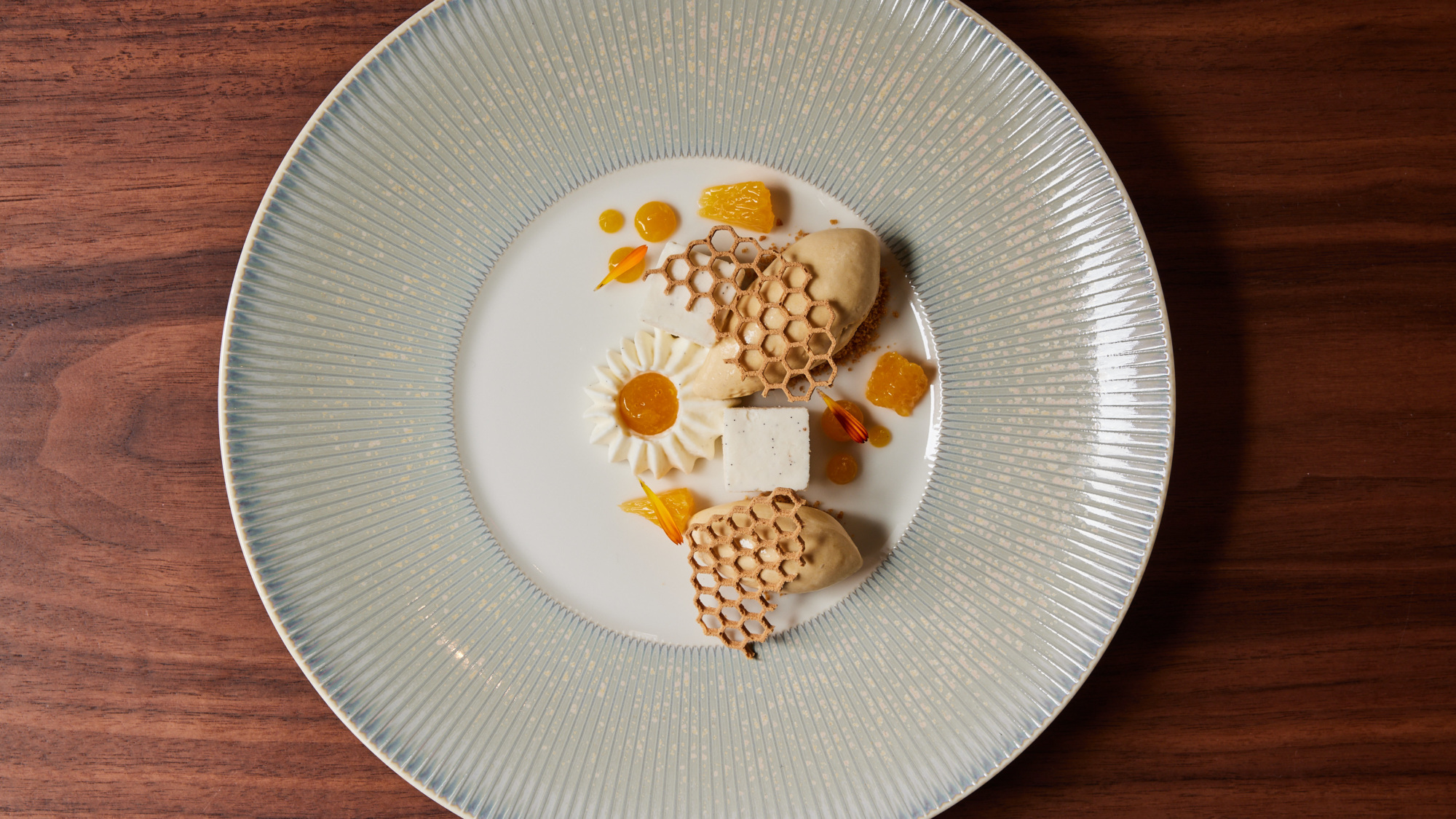
How Tribeca’s L’Abeille Crafts New Interpretations of French Haute Cuisine, in Five Dishes
Published:
In 2020, like many chefs who found themselves untethered from their full-time restaurant jobs at the start of the pandemic, Osaka-born chef Mitsunobu Nagae turned to private chef work — never realizing that two years later it would ultimately lead to him owning his own restaurant, L’Abeille, now open in New York’s Tribeca neighborhood.
Nagae, a Joël Robuchon veteran, was working at Alain Verzeroli’s Shun when the restaurant shut down in March 2020. But soon enough, Nagae was brought on as a private chef for finance executive Rahul Saito and his partner. The Tribeca locals loved his thoughtful, meticulous cooking rooted in French classics so much they decided to help him open a restaurant of his own. The result is L’Abeille, French for “the bee,” a reference to the chef’s nickname, Mitsu, which means “honey” in Japanese.
While Nagae has spent most of his 14-year career cooking in Michelin-starred fine dining temples like e.t.c. in Paris, and L’osier in Tokyo, as well as New York’s L’Atelier de Joël Robuchon, this is the first time he has a place all his own, as both chef and owner. He wants L’Abeille to redefine what fine dining can be at a time when the genre seems to be in a transition period. He describes his cooking at L’Abeille as “bistronomie” or fine dining but “without the fuss.” He wants his restaurant to be a place that cultivates regulars — not a place that people only flock to every once in a while, or for special occasions.
When it comes to the food, Nagae promises to change both the à la carte and tasting menus seasonally, and regularly. The six-course tasting menu costs $180 per person, and comes with a wine pairing priced at $95 per person.
Here’s a closer look at how Nagae does just that, as well as how beverage director John Mckenna complements his dishes with creative cocktails. Below, they both discuss, in their own words, a few standout dishes and drinks from L’Abeille’s opening menu.
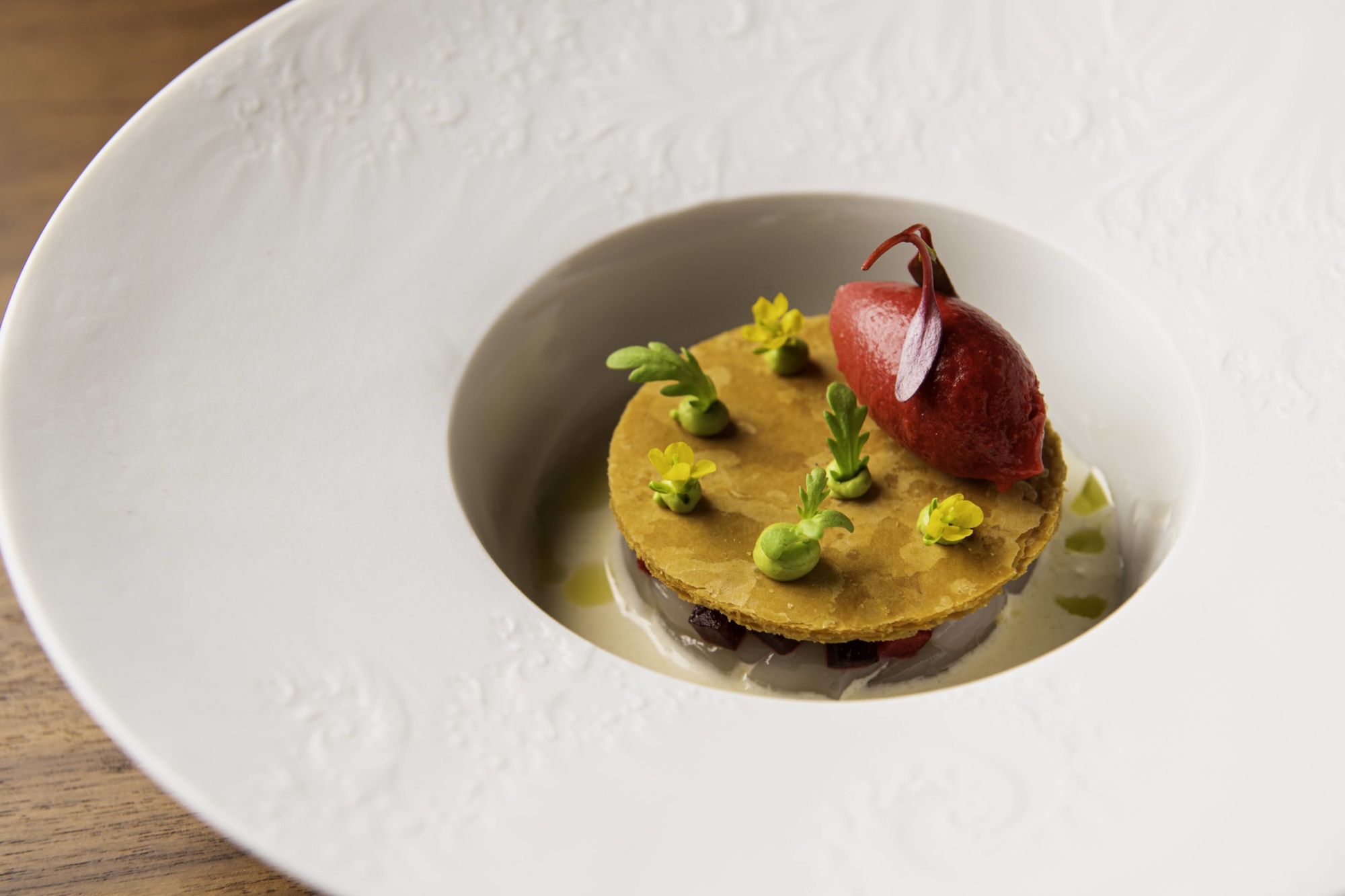
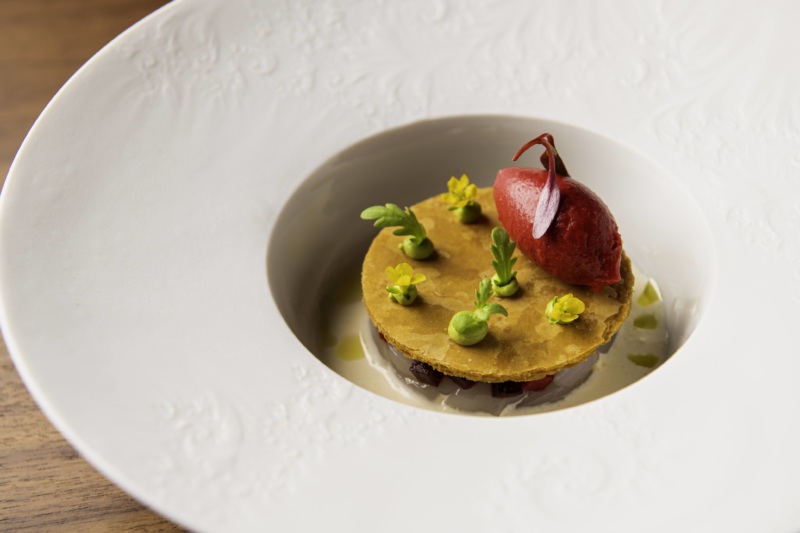
1. St. Jacques Tartare, Betterave Gazpacho Sorbet, Huile de Combava
Scallop tartare, beet gazpacho sorbet, makrut lime oil | Offered as part of the tasting menu
“This is a very traditional French dish that usually contains scallops, hazelnuts, green apples, and beets, but I wanted to add more to the dish, so I added a puff pastry, or huile de combava, on top of it, which blends really well with the crudo and also, a sorbet of beets and gazpacho,” says Nagae. “The sorbet is smooth, creamy, and savory and has a real kick to the flavor but doesn’t overpower the scallops, and it’s really special for me to have it because I struggled to put it all together.
But even that wasn’t enough for me. I thought, how can I garnish it with something different as an accent to the dish? So, I came across makrut lime oil that’s used a lot in Thai cuisine. That’s something I tested, and thought would go so well with the dish. It’s something very New York, too, because, since moving here, I’ve had more opportunities to eat non-French cuisine, like Thai, Chinese, and Latin American food. That’s how I came across this oil and how I ended up using it here.
I plan on using different scallops from different locations, depending on the season. For spring, I’m using scallops from Japan, but I might use scallops from the West Coast or the East Coast, too.
For the presentation of this dish, I also really wanted it to have a colorfulness to it, to express spring.”
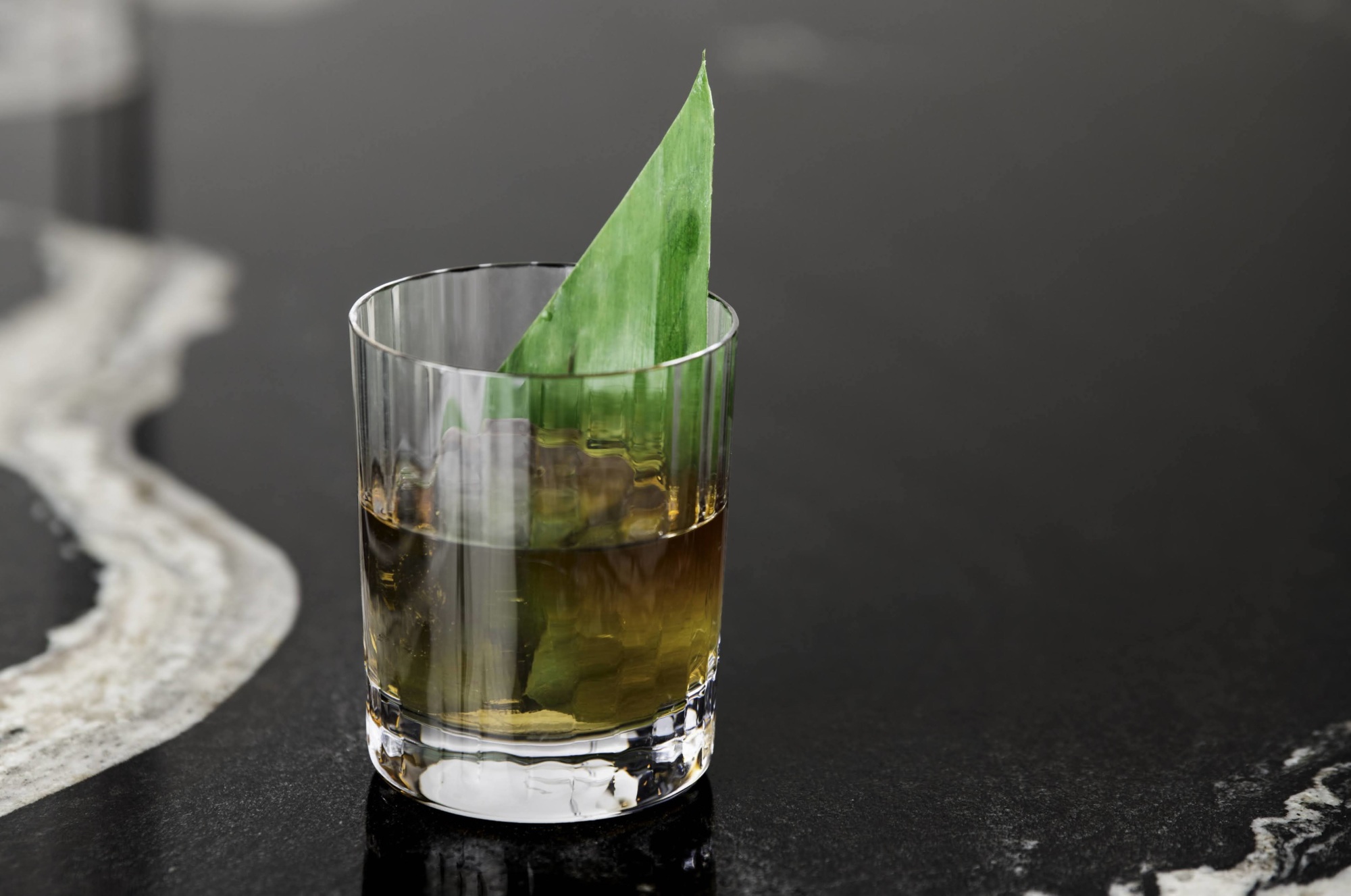
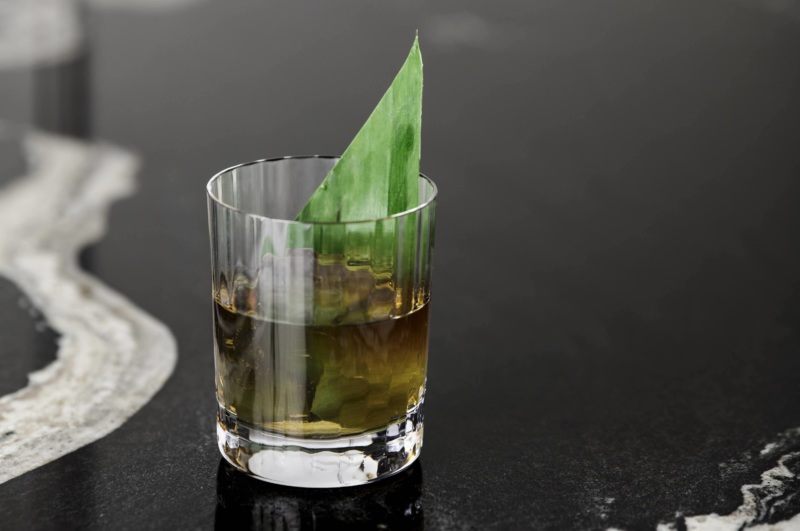
2. Sterling Mason
Banana-infused rum, espresso muscovado syrup, coconut water ($25)
“With the drink menu overall, I was really aiming more towards something that would not just highlight but really mesh well with chef Mitsu’s cooking,” says Mckenna. “He has a delicate style of cooking that’s really refined, and so I wanted to stay away from excessively bold flavors that might overwhelm. Our drinks are definitely more on the lighter side and are very refreshing, especially coming into the spring season.
The Sterling Mason is a favorite cocktail style of mine and of [L’Abeille co-owner] Rahul Saito. We both like a good Old Fashioned cocktail, and we both have an affinity for rums, whether they be Agricole style or not.
So, the Sterling Mason is made with Ron Zacapa 23 for right now, but we might tweak it, just based on availability but also to make it a touch lighter as it gets warmer. We infuse that rum with fresh organic bananas. We thinly slice the bananas and dehydrate them for 24 hours and then we infuse them into the rum for 36 hours. It’s a relatively simple process, but it’s just time consuming. The cocktail also uses espresso muscavado sugar — we basically make an espresso syrup. And then we add a touch of coconut water to lighten the drink and add some dilution.
The idea came around because, at least as far as the name is concerned, it’s the name of the building we’re in. It used to be an old warehouse, like a lot of the old buildings here in Tribeca, and this warehouse used to house a lot of fruits and veggies, and imported fresh products, like the banana ingredient. And it’s also an Old Fashioned. Old-fashioned building, Old Fashioned cocktail, so the name came around pretty easily.
To garnish it, we use banana leaves and sometimes bamboo leaves; both are tropical leaves that hold their green color for a long time. They offset and brighten the mood in the cocktail; it’s a more spirit-forward drink and it’s a good after-dinner drink.
The ice we use for all of our specialty cocktails, and anything that’s not just ice cubes, comes from Okamoto Studio Custom Ice [in Long Island City, Queens]. I really like working with them because they just have the clearest, cleanest, most beautiful ice you can get in the city. For examples, our gin and tonic has a spear in the Collins glass and you can see straight through the glass, and you wouldn’t even know there’s a piece of ice in there — it really lends itself to a beautiful presentation.”
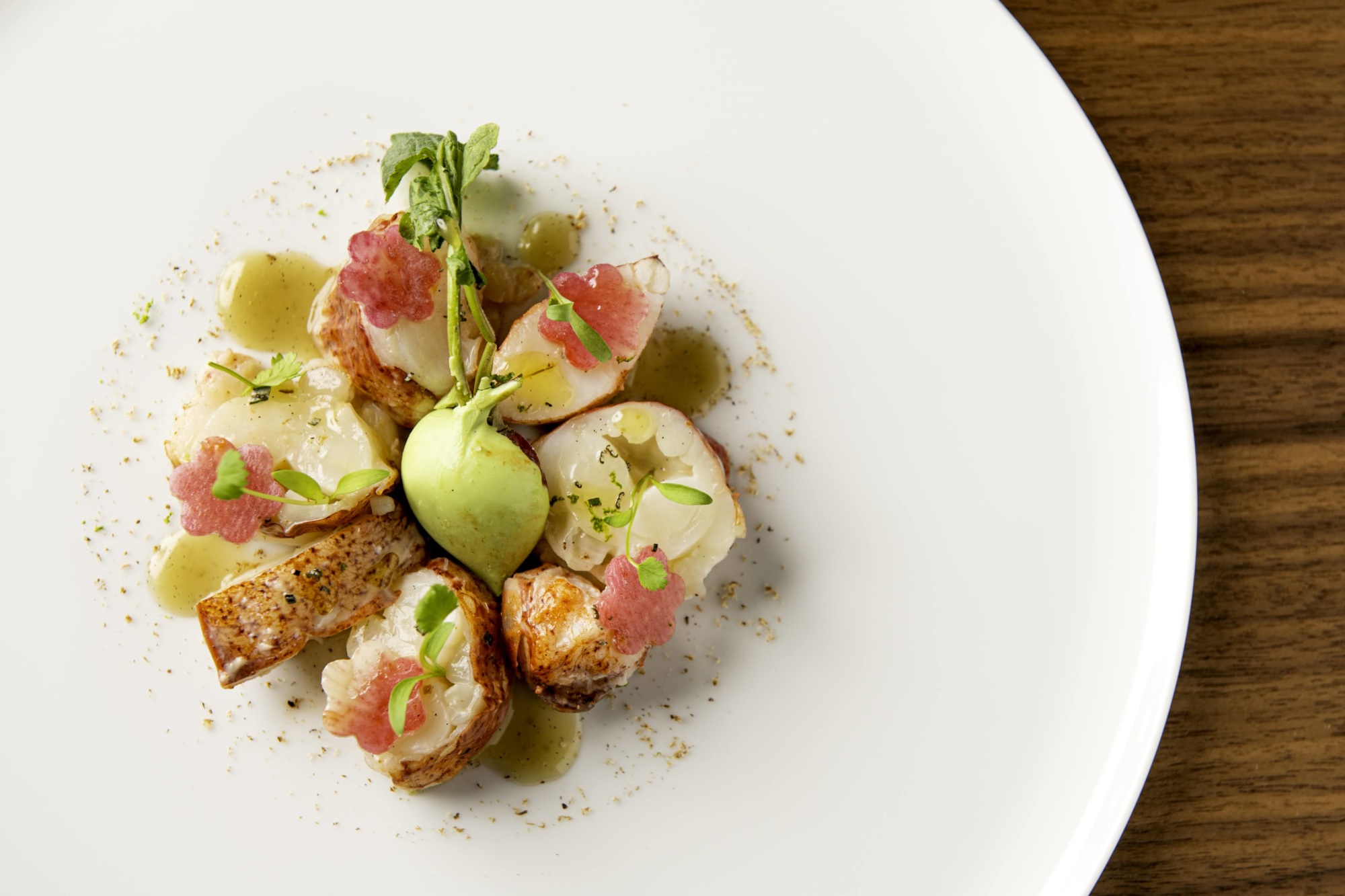
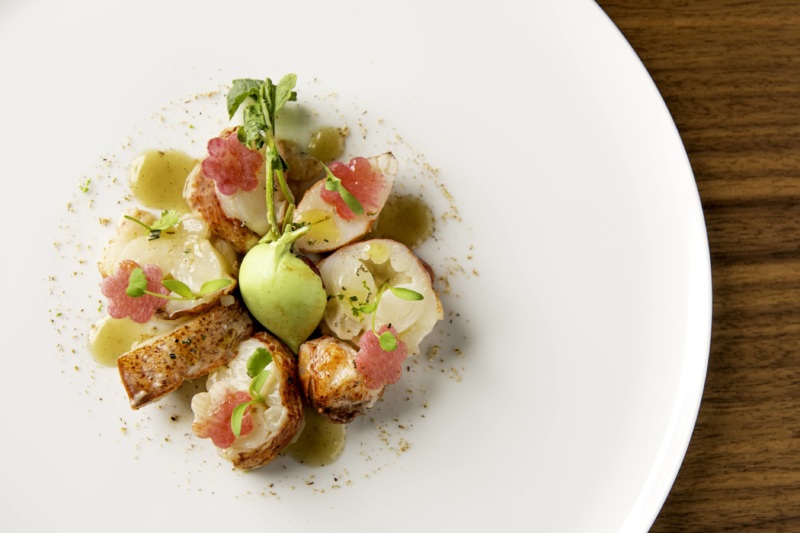
3. Homard Mariné à la Vinaigrette Vanillée, Muscade et Romarin
Poached lobster marinated with vanilla dressing, nutmeg, rosemary | Offered à la carte ($45)
“This is an extremely traditional French dish, and in the French culinary world, there’s also this very strong tradition of passing along these traditional dishes from generation to generation, from chef to chef, and with each generation they get recreated and redesigned,” says Nagae.
“This lobster dish was originally an Alain Passard dish; he created it and then it was carried on and recreated by chef Alain Verzeroli, the head chef of Shun and Le Jardinier. This is my take on that [Verzeroli] dish, recreated and restructured. I’m taking it and making it into my own recipe now.
The original dish from chef Passard was a warm poached lobster that was sliced on a plate and served with turnip and a warm honey and sherry vinegar dressing on top. It was more in the shape of a lobster, too.
The second iteration of this dish, from chef Verzeroli, made the poached lobster cold and then it was sliced in half, and made almost like a ravioli, so both sides are with turnip and lobster in the middle. It’s more presentation focused — very gorgeous and extravagant.
With my dish, I’ve always been playing with the honey and sherry vinegar dressing. I wanted to have a different palate or taste for the dressing for this dish and one of my favorite ingredients is vanilla, so that’s why I incorporated vanilla on top of the honey and sherry vinegar. I also scaled back on the turnip because, at the end of the day, lobster is really the main ingredient of this dish. It’s more focused on the lobster, so you can enjoy its taste and texture with the sauce that I’ve created.
I also wanted to make mine more “kawaii” or cuter. It may not be as extravagant [as chef Verzeroli’s], but I think it’s a cuter dish. The turnip looks almost green and it’s coated in butter — it’s a very traditional method of cooking it — but I’ve cooked it in parsley-infused butter to add a lot of flavor to it, and to enhance the flavor of the vanilla in the sauce. Because the lobster is so good, I didn’t want to poach the lobster in butter — the lobster is poached only in salt and hot water.”
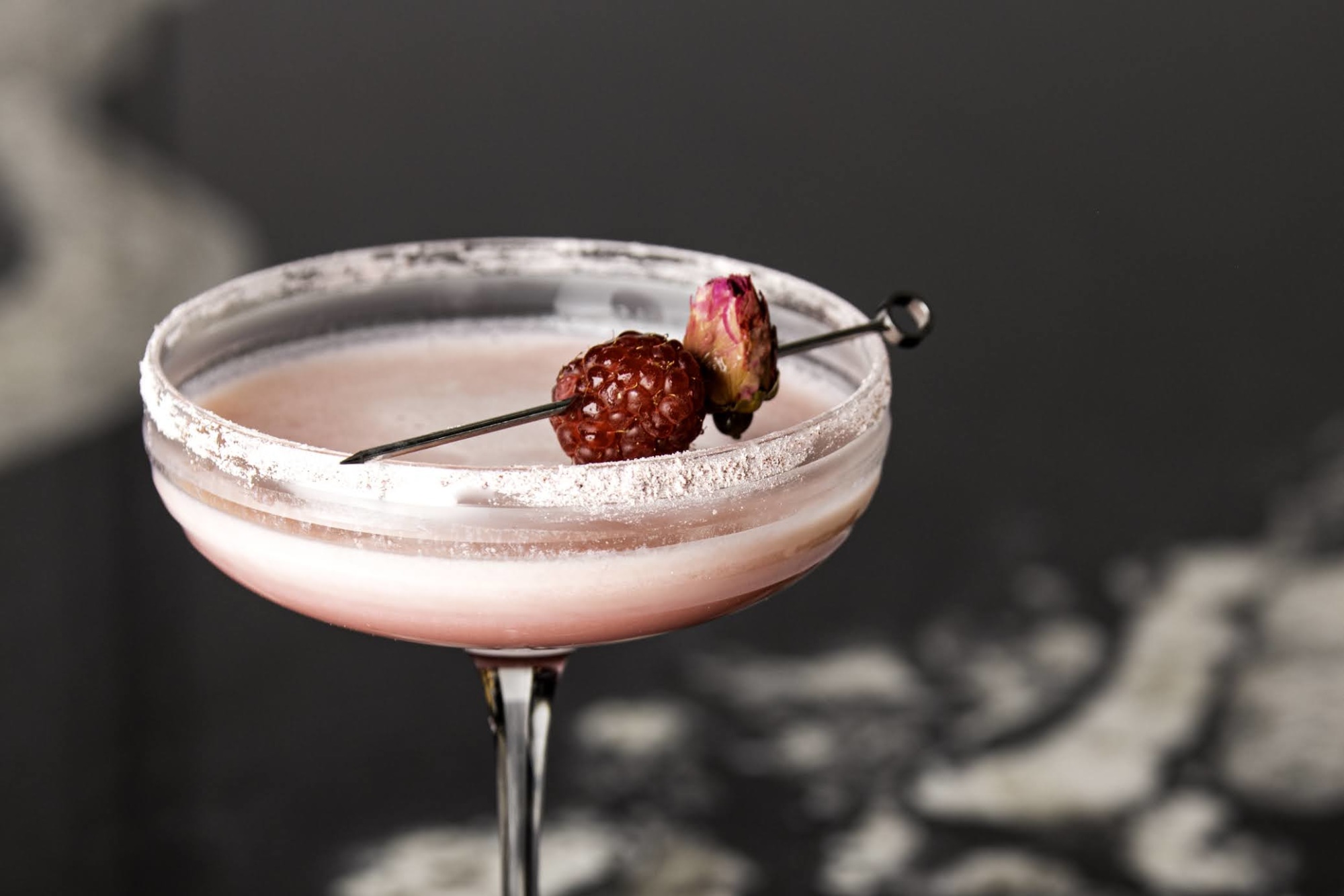
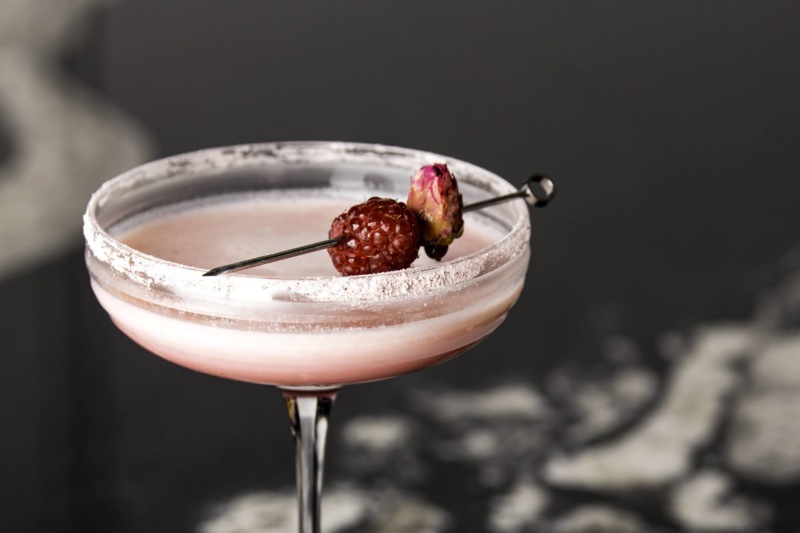
4. Marie Antoinette
Lychee, raspberry, rose, raspberry vinegar, herbal water, grass-fed whole milk, citrus ($14)
“So, we have two mocktails on the menu, but whether you want to add some booze to it or not, they are designed to be great the way they are,” says Mckenna. “This one, in particular, is a fun, little refreshing, almost creamy, rich cocktail. It does have milk in it which is kind of odd for any cocktail of any kind I would say, but what that does is just add some body to it.
I tend to find that, a lot of times, mocktails tend to be overly simple and just kind of an afterthought so something that has some really well thought out ingredients is something that tends to get overlooked. There are a lot of people who choose not to drink or can’t drink, and I think they deserve to have something that’s really well thought out, too.
The ingredients in this case are lychee that’s basically made into a syrup, and raspberries as well. The raspberries show up in a syrup and a fresh raspberry for garnish and raspberry vinegar in the cocktail —the vinegar part is what makes it pop a little bit; it gives you that acidity that you would hope to get. There’s also grass-fed whole milk which adds a bit of herbaceous character to it.
The main thing, which is where the name comes from, is the rose. There’s rose blossom water. Roses were Marie Antoinette’s favorite flower, so it’s an homage to her, as it were. Although I think she might want something alcoholic, so if you add an ounce-and-a-half of gin, like a London dry style, it goes pretty well.
The garnish on this one is a little more complex: We have confectioner’s sugar that we mix in with powdered dried raspberries so it has this pink tinge, and we sugar the rim of the coupe glass with that and then dried rose hip flower and fresh raspberry spiked in with a nice steel pick. The glass has a frosted ring around it as well and it all comes together and has this very light rose pink color to it.”
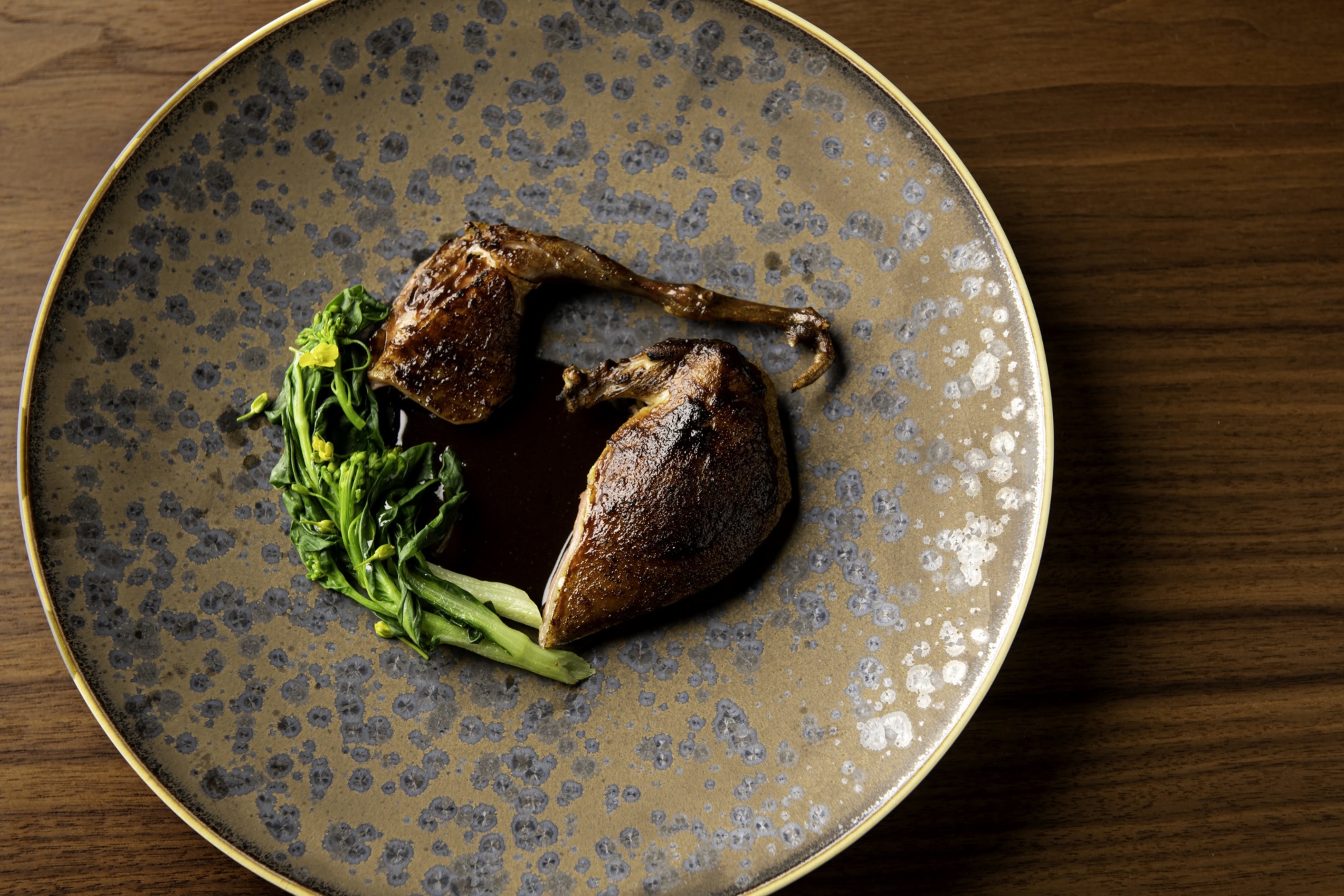

5. Pigeon Rôti et Laqué au Miso, Sauce au Bourbon
Roasted squab glazed with miso, Bourbon sauce | Offered à la carte ($38) and on the tasting menu
“The squab is also a very traditional dish in France and in French cuisine but, that said, not a lot of people are very familiar with it, and some people aren’t very into eating squab, either,” Nagae explains. “So, I first started looking at squab with different taste palates: The French squab tends to be meatier and thicker in taste, but I’ve been sourcing this squab from California that tends to be a little lighter and doesn’t have as overpowering a taste. I thought this would work with the New York taste palate. I want to reintroduce squab for people who are not really huge fans of squab to be able to eat it and enjoy it as a dish.
The inspiration for this dish came from yakitori. I use a method to lighten the smell and texture of the squab by using a red miso glaze that’s rubbed on top of the squab before I grill it on the binchotan, or Japanese charcoal grill. I roast the squab first in a frying pan and then I move it to the binchotan grill, then take it off the grill, apply the miso glaze, and then grill it again.
For this dish, I use the breast and leg of the squab. I can’t tell you which purveyor I’m sourcing the squab from, but I can guarantee you that it’s very fresh. Most squab here in the U.S. comes to you vacuum packed or sealed after being gutted, but I’m getting these ones fresh and whole, and we butcher them in our own kitchen.
For the sauce, I was inspired by Mexican mole, so I use a little bit of chocolate and coriander and some other spices in there. I also garnish the dish with some baby bok choy, something that’s very seasonal for the spring.”
L’Abeille is open Tuesdays through Thursdays from 5:30 to 11 p.m. and on Fridays and Saturdays from 5:30 p.m. to midnight.
Deanna Ting is Resy’s New York Editor. Follow her on Instagram and Twitter. Follow Resy, too.

